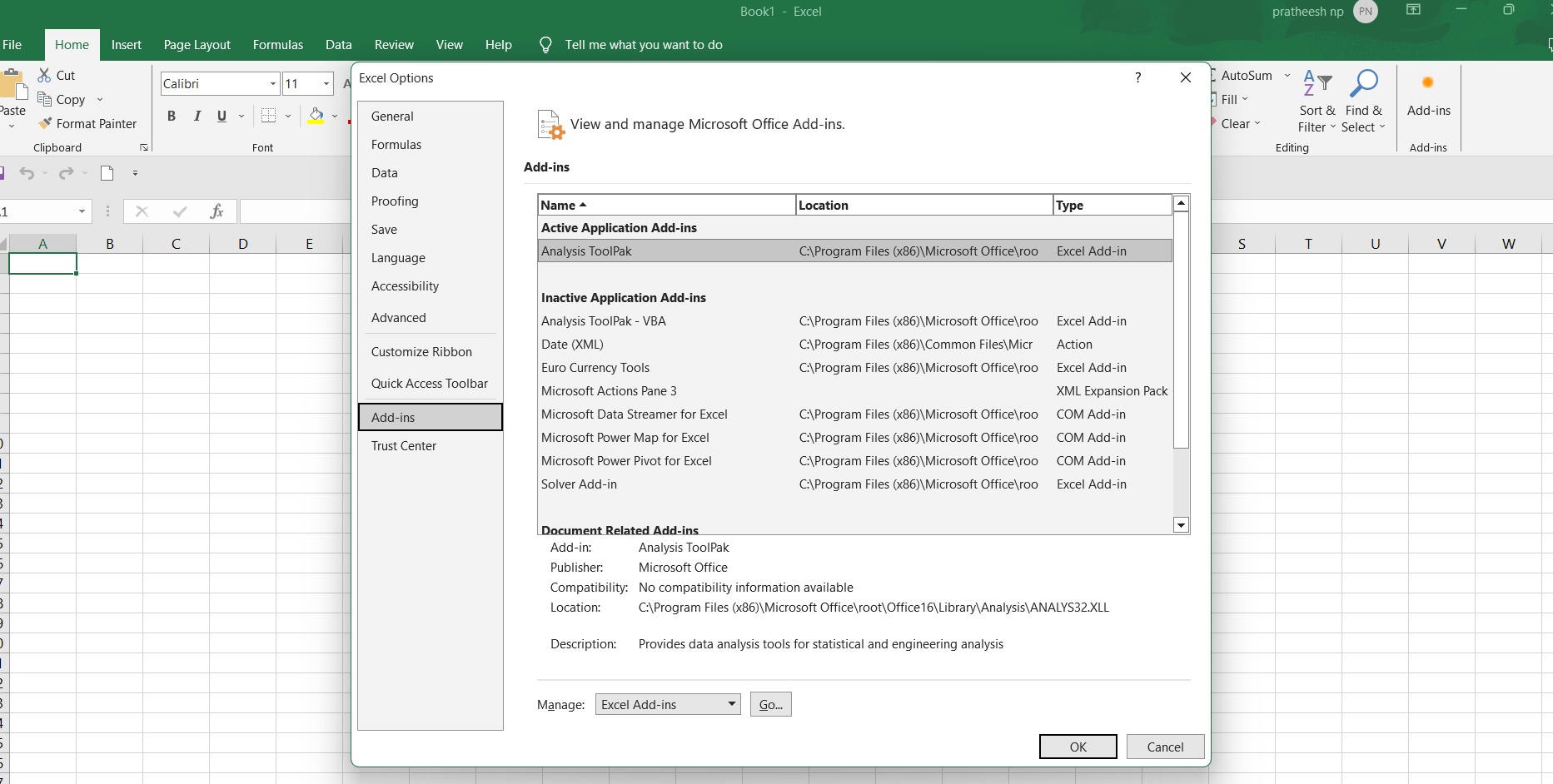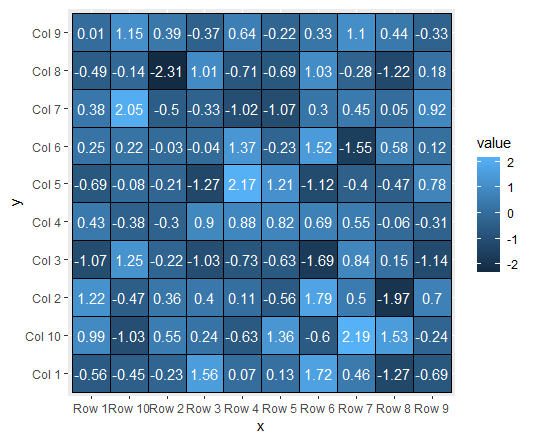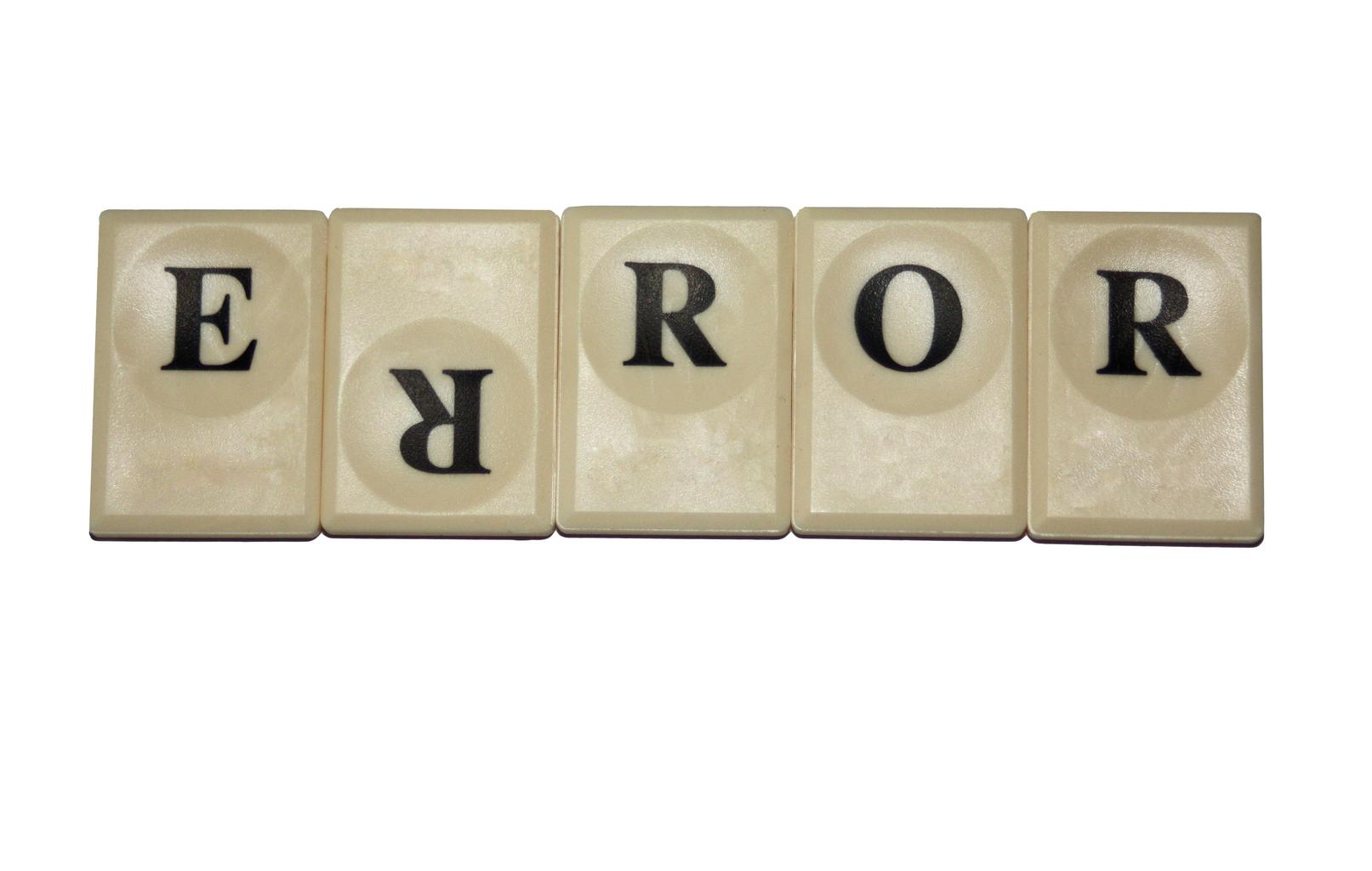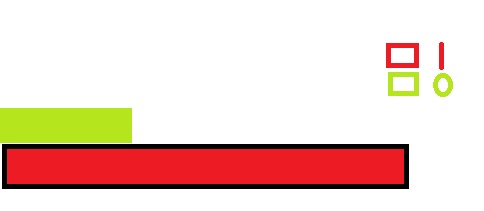How to create a heatmap in R, you must convert a numerical matrix into a data frame that ggplot2 can interpret.
Use the melt function from the reshape package for that.
How to make a rounded corner bar plot in R? – Data Science Tutorials
library(reshape)
set.seed(123)
m <- matrix(round(rnorm(200), 2), 10, 10)
colnames(m) <- paste("Col", 1:10)
rownames(m) <- paste("Row", 1:10)
# Transform the matrix in long format
df <- melt(m)
colnames(df) <- c("x", "y", "value")
head(df)
x y value 1 Row 1 Col 1 -0.56 2 Row 2 Col 1 -0.23 3 Row 3 Col 1 1.56 4 Row 4 Col 1 0.07 5 Row 5 Col 1 0.13 6 Row 6 Col 1 1.72
Heat map with geom_tile
When using geom_tile in ggplot2, a heap map can be produced by giving categorical variables to the x and y inputs and a continuous variable to the fill argument of the aes function.
Data Science Challenges in R Programming Language (datasciencetut.com)
# install.packages("ggplot2")
library(ggplot2)
ggplot(df, aes(x = x, y = y, fill = value)) +
geom_tile()
Square tiles
Be aware that the tiles may not be squared depending on the size of the plotting window. Use cood_fixed if you wish to keep them square.
library(ggplot2) ggplot(df, aes(x = x, y = y, fill = value)) + geom_tile() + coord_fixed()

Border customization
With colour, lwd, and linetype, respectively, you can change the border colour, line width, and line style of the tiles.
How to Use Mutate function in R – Data Science Tutorials
library(ggplot2)
ggplot(df, aes(x = x, y = y, fill = value)) +
geom_tile(color = "white",
lwd = 1.5,
linetype = 1) +
coord_fixed()
Adding the values
Additionally, you may use the geom_text function to add values over tiles while giving a number variable as the label argument for the aes function.
ggplot(df, aes(x = x, y = y, fill = value)) + geom_tile(color = "black") + geom_text(aes(label = value), color = "white", size = 4) + coord_fixed()

Algorithm Classifications in Machine Learning – Data Science Tutorials
Color palette
There are three options for altering the heat map’s default colour scheme.
scale_fill_gradient
ggplot(df, aes(x = x, y = y, fill = value)) + geom_tile(color = "black") + scale_fill_gradient(low = "white", high = "red") + coord_fixed()
Random Forest Machine Learning Introduction – Data Science Tutorials
scale_fill_gradient2
ggplot(df, aes(x = x, y = y, fill = value)) +
geom_tile(color = "black") +
scale_fill_gradient2(low = "#075AFF",
mid = "#FFFFCC",
high = "#FF0000") +
coord_fixed()
How to Group and Summarize Data in R – Data Science Tutorials
scale_fill_gradientn
ggplot(df, aes(x = x, y = y, fill = value)) + geom_tile(color = "black") + scale_fill_gradientn(colors = hcl.colors(20, "RdYlGn")) + coord_fixed()











